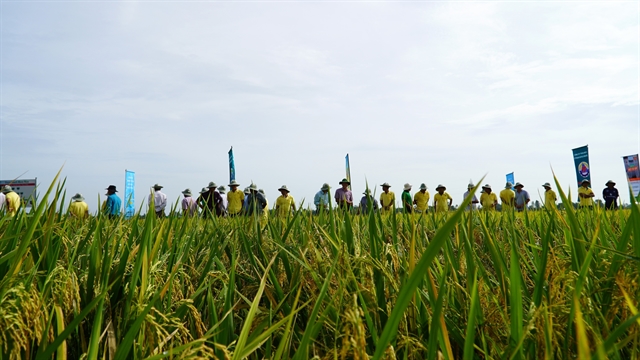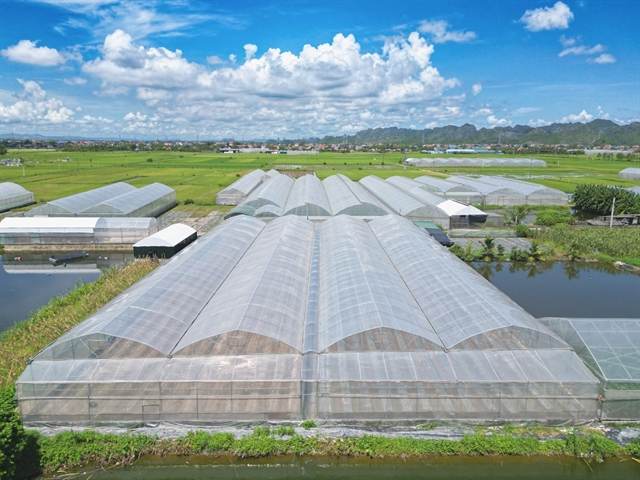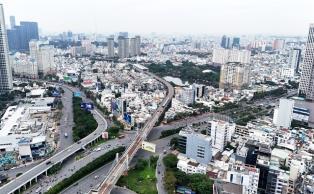Huỳnh Tấn Đạt, Director General of the ministry’s Plant Production and Protection Department, said by 2050, all major crop areas are expected to adopt low-emission cultivation practices.

HÀ NỘI — The Ministry of Agriculture and Environment on Wednesday announced details of a project on low-emission crop production for the 2025–35 period, with a vision toward 2050.
Chairing a conference to announce the plan in Hà Nội, Deputy Minister of Agriculture and Environment Hoàng Trung said it comes at the right time amid increasingly complex climate change challenges and Việt Nam’s deeper integration into global markets.
He stressed that the key objective is to ensure both productivity and value growth of agricultural products while reducing greenhouse gas emissions, moving toward green, circular and sustainably competitive agriculture.
According to the ministry, producing agricultural goods with traceable carbon footprints and lower emissions will help Việt Nam access markets such as the EU, Japan and North America, where prices could rise by 10 to 25 per cent compared with conventional products.
If the solutions in the project are effectively implemented, the crop sector could reduce 8 - 11 million tonnes of carbon dioxide equivalent annually, contributing significantly to Việt Nam’s Nationally Determined Contribution (NDC) targets, while also improving soil quality, reducing open-field burning and pollution, and increasing farmers’ incomes, the deputy minister said.
Huỳnh Tấn Đạt, Director General of the ministry’s Plant Production and Protection Department, said that by 2050, all major crop areas are expected to adopt low-emission cultivation practices. The sector will also develop a digital database on emissions integrated with the national monitoring system, and introduce a low-emission label for key agricultural commodities to enhance their market value and international competitiveness.
“The crop sector aims to help cut at least 15 per cent in greenhouse gas emissions by 2035 compared to the 2020 baseline,” he said.
Fifty-nine low-emission production models will be implemented in 34 provinces and cities, including low-emission rice models, rice–fish/shrimp systems, rice–maize/peanut rotations, perennial crops such as tea, coffee, pepper, cashew, orange, pomelo, durian, longan and lychee.
Agroforestry, circular agriculture, waste reuse, biochar production and crop conversion on double-crop rice land are also among the models.

Nguyễn Thị Thu Hương, deputy director general of the Plant Production and Protection Department, said the project’s implementation is not only about emission reduction but also about enhancing management capacity, coordination and connection among units under the Ministry of Agriculture and Environment, local authorities, international partners and stakeholders.
At the local level, each province will develop one to three models suitable for local conditions, with potential for replication and the development of carbon credits.
The sector will also train about 3,000 officials, farmers and enterprises, and prepare at least five sets of communication materials to raise awareness about environmentally-friendly agriculture.
Sharing a local perspective, Nguyễn Mạnh Phương, deputy director of Hà Nội’s Department of Agriculture and Environment, said low-emission crop production not only contributes to climate commitments but also helps safeguard livelihoods and enhance the value of agricultural products.
He emphasised that all action plans should put farmers at the centre as they are the main implementers as well as the most affected by climate change.
Hà Nội currently has over 160,000 hectares of rice, 20,000 hectares of fruit trees, and 30,000 hectares of vegetables, along with large areas of tea and ornamental plants. Implementing low-emission models has both environmental and livelihood significance for hundreds of thousands of farming households, he said. — VNS





